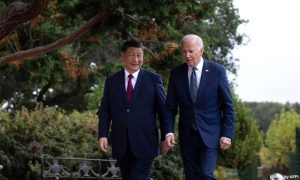DARWIN, Australia: Australia’s saltwater crocodile population has rebounded significantly, thanks to conservation efforts spearheaded by experts like Grahame Webb. Despite their success, blunt messaging about the dangers posed by these predators remains crucial to ensuring public safety.
Before government intervention in the 1970s, uncontrolled hunting had decimated nearly 98 percent of the wild saltwater crocodile population in the Northern Territory. Today, over 100,000 “salties” thrive along the continent’s northern coasts, rivers, and wetlands.
To coexist peacefully with these apex predators, Australia has implemented public safety campaigns like Crocwise and regularly relocates crocodiles from densely populated areas. Additionally, innovative programs, such as wild egg harvesting for crocodile farming, provide economic incentives for local communities, including many Indigenous Australians.
The crocodile farming industry, estimated to be worth over Aus$100 million annually, not only supports tourism but also supplies highly prized leather to luxury brands like Hermes and Louis Vuitton. This unique approach has helped prevent mass culls of crocodiles and fostered conservation efforts.
Jess Grills, a crocodile keeper at Crocodylus Park near Darwin, emphasizes the importance of respecting these predators while acknowledging their potential danger. By providing opportunities for people to observe crocodiles up close, establishments like Crocodylus Park play a vital role in educating the public and garnering support for conservation initiatives.
While attacks by saltwater crocodiles are rare, their increasing population size may lead to a rise in incidents. Balancing public safety concerns with conservation efforts remains a significant challenge. Nonetheless, by fostering a greater understanding and appreciation for these magnificent creatures, conservationists hope to ensure their continued survival in the wild.























